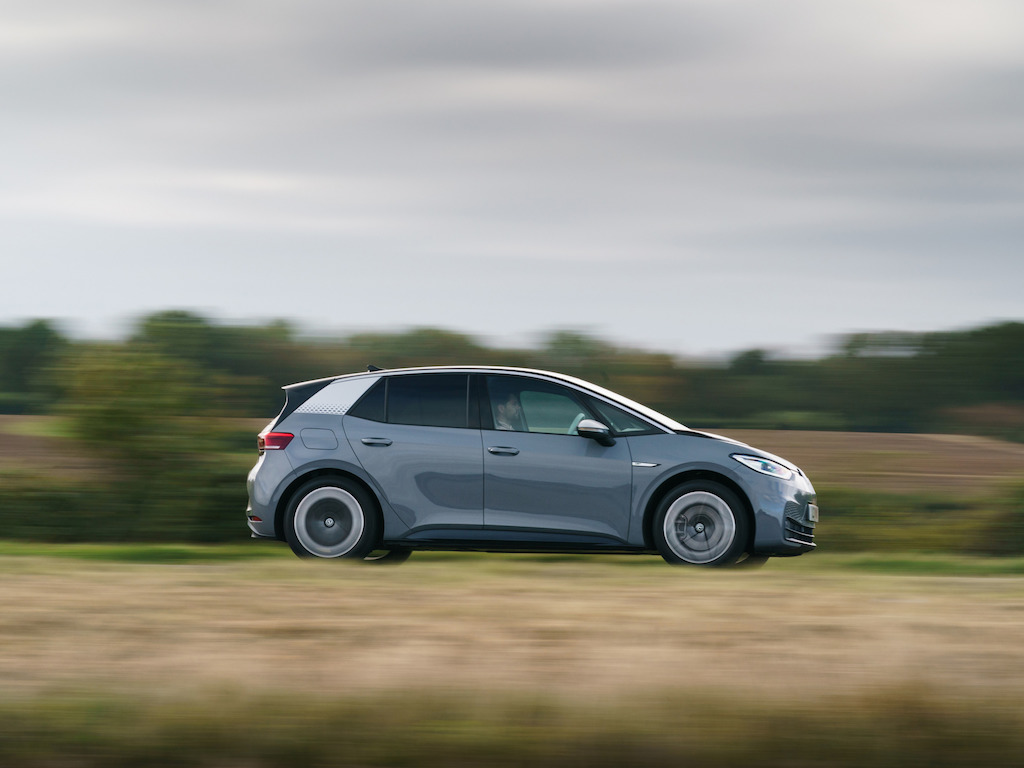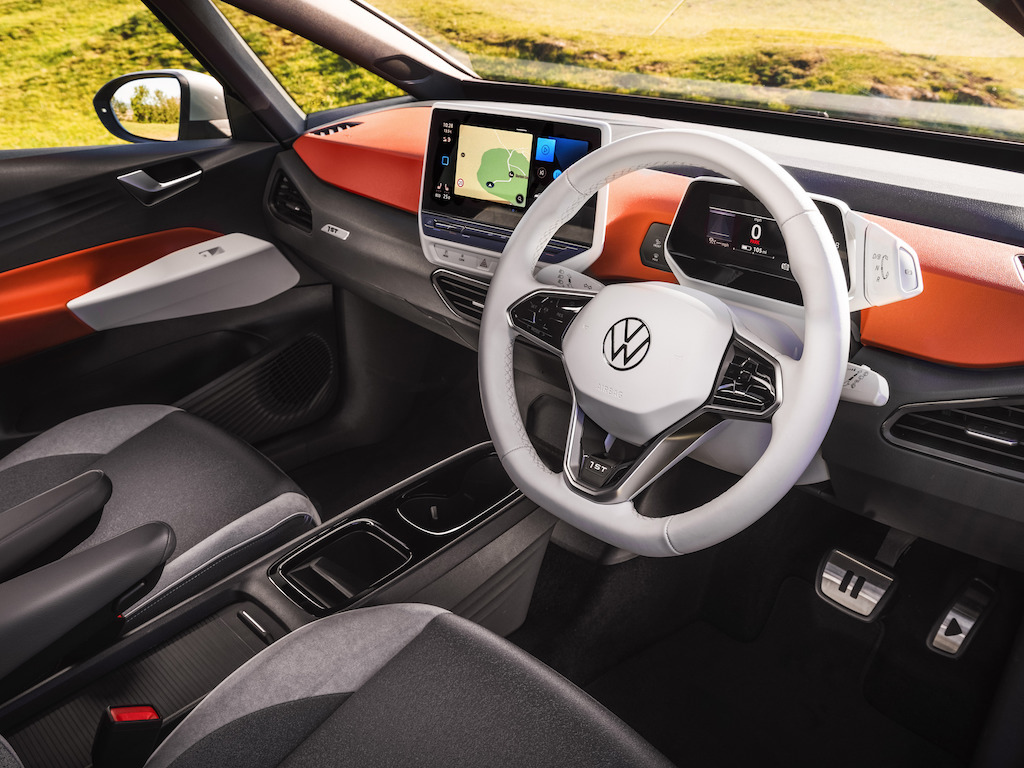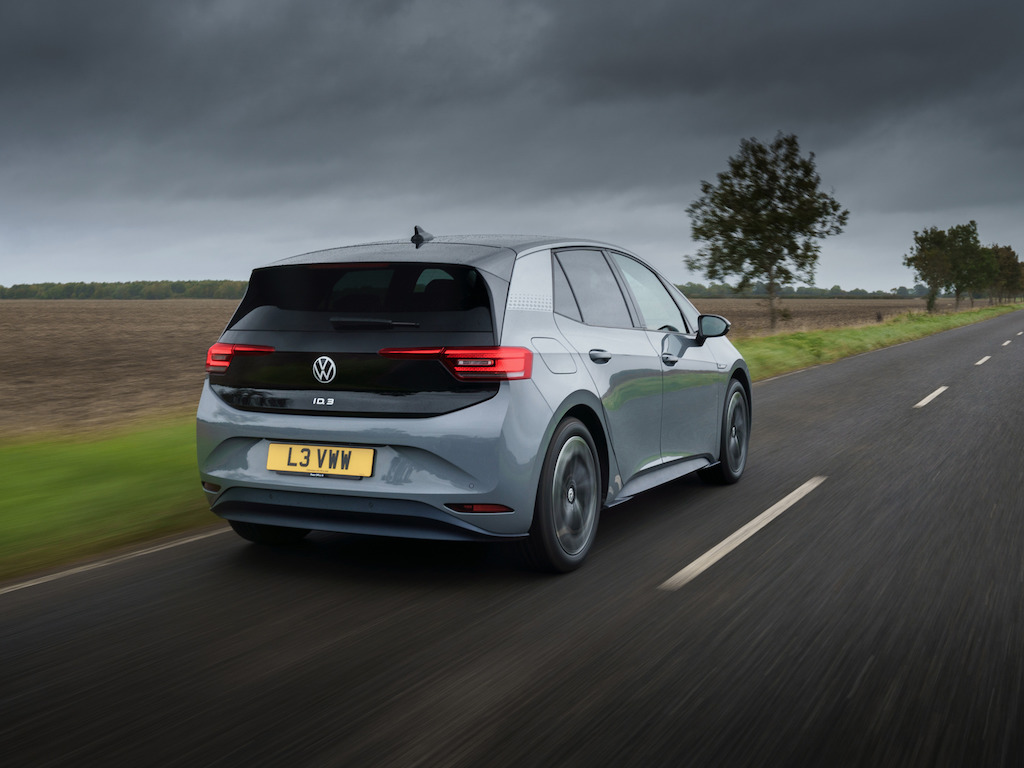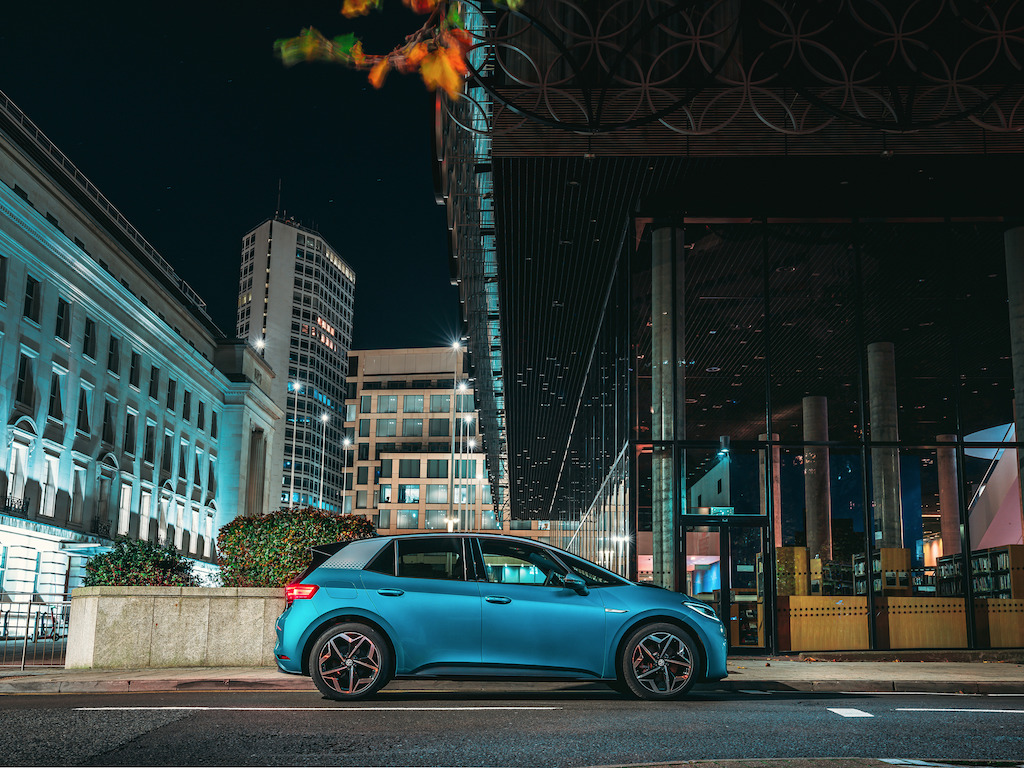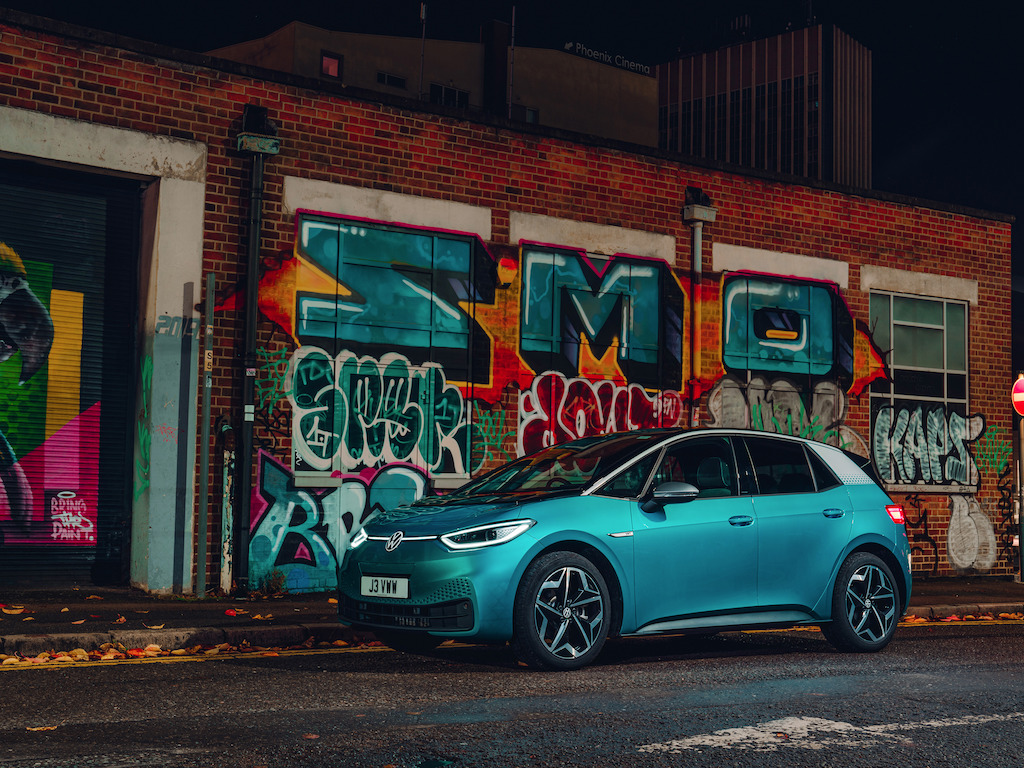Road Test: Volkswagen ID.3
Martyn Collins asks if the ID.3 is the car to bring electric motoring to the masses?
SECTOR Small family PRICE £29,990-£39,290 RANGE 260-340 miles CHARGING 30 mins (0-80% 100kW)
The ID.3 is much more than Volkswagen’s first ground-up, all-electric new model; it’s also the first car from the carmaker’s all-new ID electric family of models, which will quickly grow with the addition of the ID.4 SUV this year.
An indirect replacement to the Mk7 all-electric e-Golf, the ID.3’s basic shape still looks Golf-like, but it’s 23mm shorter, 20mm wider and 96mm taller than the latest small family hatch. The ID.3 also has a 129mm longer wheelbase and is fitted with much larger wheels, starting at 18 inches and rising to 20 inches.
The larger wheels are fitted to optimise the aerodynamics; other design features to help the ID.3 slip through the air are the sealed nose, the large front windscreen with a panel over the bottom to increase air flow and a neat rear spoiler above the rear window, all adding to up to a better-than-Golf drag coefficient figure of 0.267.
Inside, the lack of dashboard controls, like the latest Golf, makes the new ID.3’s interior look quite stark – although this was improved by our 1st Edition test car’s white plastic trim and Saffron Orange panels. There is a 5.3-inch display for the dials, with most features controlled by the 10-inch touchscreen or touch sliders below it. Simple controls can also be made Amazon Alexa-style by saying ‘Hello ID’. Like the Golf, we didn’t find this feature worked so well in practice and all the different menu screens can seem a bit confusing too.
Quality is high throughout, although some of the plastic trim doesn’t feel as special as you’d expect from a Volkswagen, but the driving position is comfortable and multi-adjustable. Like the Golf, the ID.3 offers five-door practicality. It is the ID.3’s longer wheelbase and lack of transmission tunnel that translate to impressive space both front and back, with plenty of useful stowage. The 385-litre boot is a good size and, when the seat is folded, can be extended to 1,267 litres.
Life is the entry-level model, followed by Business, Family, Max and range-topping Tour trim. Equipment is made up of pack options that are available on specific models. The basic packs are Comfort, Infotainment, Design, Assistance and Sport, which can be added to with an additional ‘Plus’ flavour. ID.3 prices start at £29,990, rising to £39,290 for the Tour.
Two power outputs are available: Pro Performance with a 58kWh battery and 204hp motor set-up and 260-mile range and the Pro S with the same 204hp motor but a 77kWh battery, giving a 340-mile range. When it comes to recharging, the ID.3 supports AC, DC or fast charging; the 77kWh version is able to be charged to over 200 miles in just 30 minutes. Our 1st Edition test car was based on the Pro Performance 58kWh version, which can be charged to 180 miles of range in 30 minutes via 100kWh DC charging.
On the road, the ID.3 has a good level of agility. The steering is precise – but could do with more feel. The handling is tidy, though it’s here and on the move that you can feel the weight of the battery pack.
The Lowdown:
Key Fleet model: ID.3 Business
Strengths: Quality, spacious interior, decent drive
Weaknesses: Digital cockpit and infotainment overcomplicated?
The Verdict:
Get past question marks over the digital cockpit and infotainment and the ID.3 is a stylish and high-quality electric hatch.
FW Star Rating: 4/5






